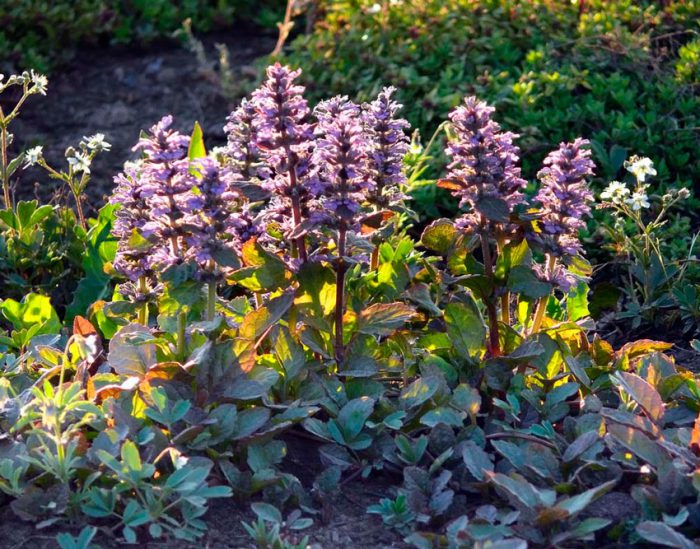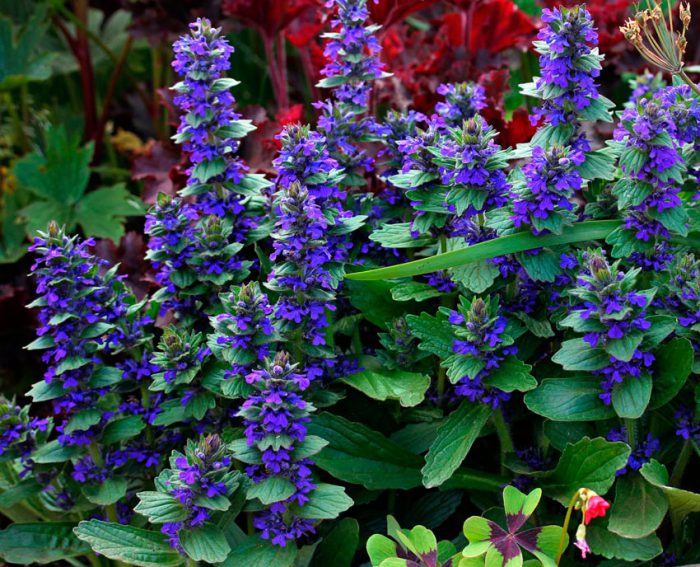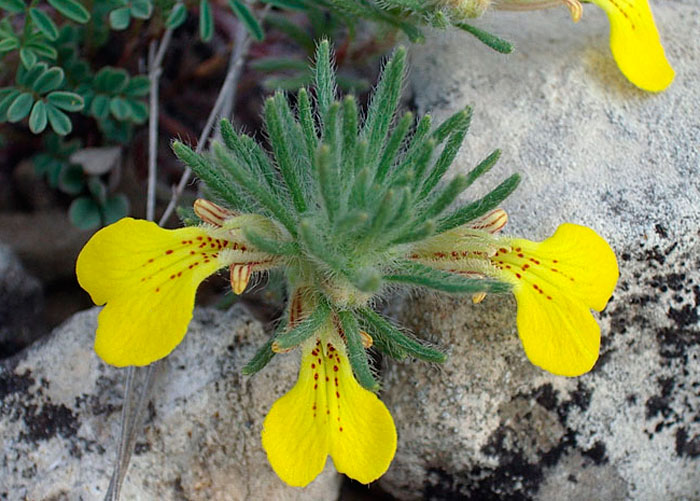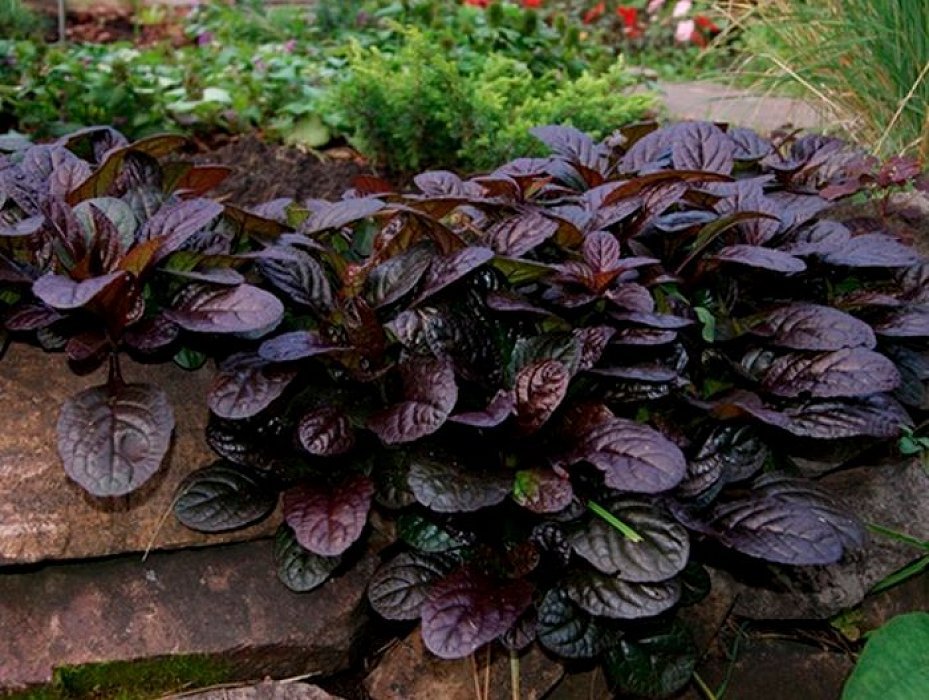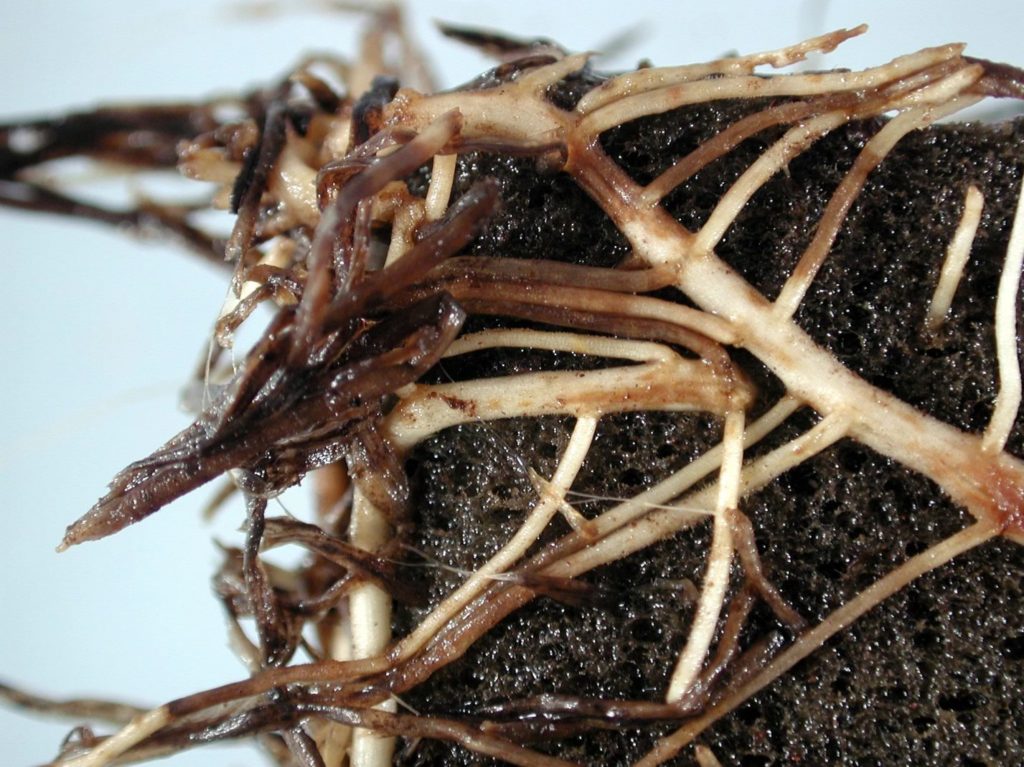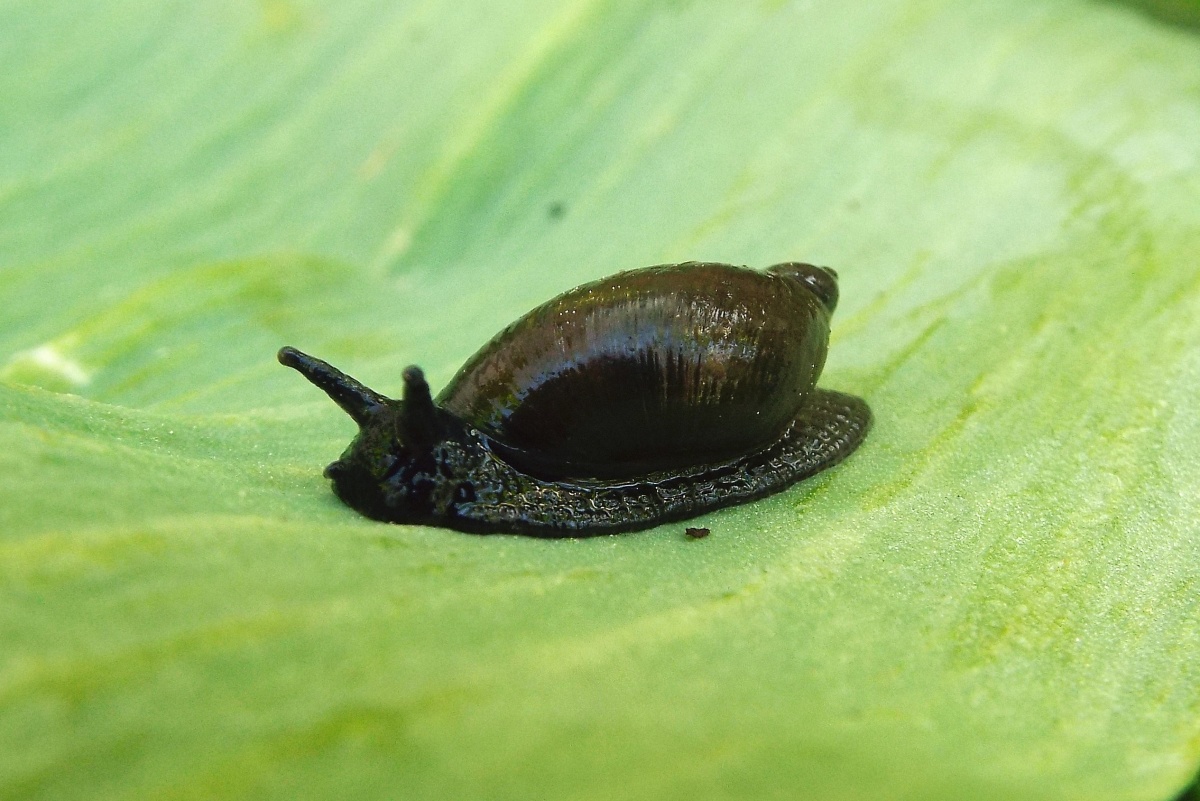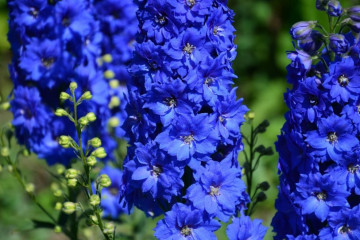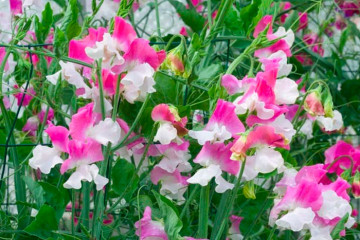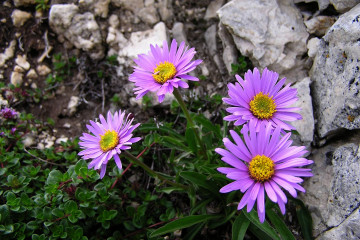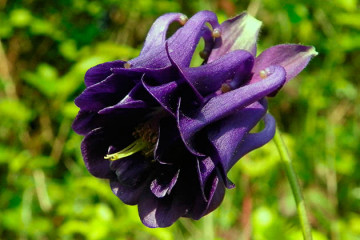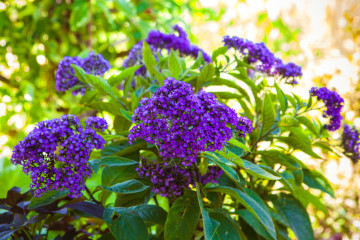Creeping insect (Ajuga Reptans) - planting and growing from seeds
Content:
Tenacious creeping (in Latin "Ajuga Reptans") is a herbaceous flower. It also has such names as: ayuga, unfading, dubrovka, oak tree. Ayuga tenacious is common in the northern hemisphere in the temperate climatic zone. The tenacious plant is resistant to adverse conditions and is used for medicinal purposes. What kind of culture it is is discussed below.
What is this plant: a description of the culture
The tenacious, or Ayuga, is a member of the Yasnotkovye family. The herb is tenacious evergreen, deciduous or semi-evergreen. There are both perennial and annual species. The bush grows from 0.05 to 0.5 m. The arrangement of the leaves is opposite.
The flowers are purple, yellow, purple or bluish. In all groups, the species do not require special conditions for cultivation. Gardeners mainly use decorative leafy and ground cover species. In landscape design, it is planted in rockeries, mixborders.
The homeland of the tenacious flower is Asia Minor, North Africa, Europe, the Caucasus, the Far East, Eastern Siberia.
Beneficial features
The leaves of the plant in question are used for culinary purposes. All of its aerial components are used in traditional medicine recipes for medicinal purposes, since they have a healing, anti-inflammatory, hemostatic effect.
What species grow in nature
In their natural habitat, there are about 70 species of tenacious.
Geneva
The tenacious geneva, or shaggy, reaches a height of 50 cm. The upper leaves are elongated or ovoid, the lower ones are crenate-toothed. The flowers are blue or pink. Inflorescences are collected in whorls of 2-5 pcs. The stems of this species do not grow. Flowering occurs in April-July.
Most often found in the European part of Russia, Ukraine, Moldova, Belarus and the Caucasus. The most popular variety of this species is the tenacious Genevan Helena. It is a perennial that grows up to 50 cm in height.
Chios
Chios tenacious is common in the Caucasus, Iran, the Mediterranean. The species mainly grows on rocky terrain, roadsides, embankments. In height, it can stretch no more than 20 cm. Shoots are erect. They are covered with white villi. The leaves are spatulate below, and three-toothed above. The flowers are in the shape of a false spike and are located at the ends of the shoots. They are yellow in color.
Pyramidal
The pyramidal type began its existence in Europe. It can grow in rocky areas and among bushy plants. It reaches a length of up to 25 cm. The leaf plates are similar to an oval. There is a long pile on them. Flowers grow up to 10 cm. They can be white, pink or purple. There are several varieties of this type:
- Lunar Landing. These flowers are yellow in color. The variety was bred by the botanist F. Riotto;
- Crispus. The leaves on the bush are large and compressed. They are greenish in color. The petals are blue;
- the tenaciousness of Metallica Crisp. The bush grows up to a maximum of 5 cm.Small green leaves with a metallic sheen.
Shaggy
Height up to 50 cm. Lilac flowers. The species is common in Russia, Ukraine and Belarus.
Eastern
The eastern species grows up to 10-20 cm. The leaves are wedge-shaped. Flowers in a blue tone. Bracts have a blue tint.
Laxman
The height of the bush is 0.2-0.5 m. There are drooping leaves on the shoots. The entire leaves are large and silvery in color. The flowers are small. They are light pink and light yellow.
Herringbone
It grows only up to 6 cm. The leaves have a green-gray tint and serrated ends. They look like bumps. Flowers are yellow.
Turkestan
Grows in Uzbekistan and Tajikistan. The small number of branches is the main feature of this species. The shoots are thick. They have elliptical leaves. The leaves are brown. The flowers are purple. The plant has medicinal properties.
Most popular varieties
The most diverse varieties are bred on the basis of the creeping tenacious.
Burgundy Glow
The tenacious Burgundy Glow is an evergreen and perennial plant. It grows in height from 10 to 25 cm. The leaves are wide. In Moscow, the flowering time lasts from April to November. The flowers are purple-violet. They have burgundy and green spots and a white edging.
Black Skellop
The tenacious Black Skallop has dark purple leaf plates. Notches are visible from the edges. The flowers are blue.
Arctic Snow
Grows in any areas where there is no sunlight. The leaves are speckled, dark green in color. They grow up to 10 cm in length. They also have a smear in the middle. In length, this species grows to 5-10 cm.
Chocolite Chip
This flower has the smallest leaves, only 3-4 cm. They are painted in the color of chocolate. The flowers are close to each other.
Multicolor
Tenacious Multicolor has leaves of different colors. They can be cherry-purple with various spots of cream, pink, orange. The spots are unevenly spaced. The flowers are blue in color. They are small in size. Plant height 10-15 cm. Leaves are large and shiny.
Atropurpurea
The tenacious Atropurpurea grows up to 15 cm. The leaves are brown with lilac and reddish color.
Mahogany
The height of the bush is 10-15 cm. The leaves are rounded. They are reddish purple and black and burgundy in color. Flowers of a blue hue.
Features of home care
Growing and caring for an apartment is different than for plants that grow in open ground. Therefore, below it will be described in more detail how to plant and care for a tenacious creeping house.
Watering
Before new leaves appear on the seedlings, watering is carried out so that the soil does not have time to dry out. When the plant begins to grow in length, watering is minimized. It is watered only when the ground is completely dry.
Spraying
The plant in question is completely unpretentious in care, so additional spraying is not required.
Humidity
This plant is preferable to grow in conditions of moderate humidity. With excess moisture, it can get sick.
Priming
In order for the tenacious to take root, it is necessary to use loose and moist soil. Loose, fertile soil is most suitable, which allows air to pass through well. The best option is to mix turf soil, sand, peat, humus.
Top dressing
Wood ash is the most suitable top dressing. Organic fertilizers are also suitable for Ayuga. The more you contribute, the better it will be. Compost and peat are used.Dry top dressing is poured both under the root and diluted in water to irrigate the leaves.
Mineral fertilizers are applied at regular intervals. For this, complex phosphorus-potassium species are used. In addition, wood ash is used.
When and how it blooms
The flowering period begins in late April and lasts until July. The inflorescences are spike-shaped. Flowers are two-lipped. They are collected in whorls of 6-8 pcs. There are blues, magenta, cyan, pink and white.
Vegetative propagation
Popular methods of reproduction of the tenacious are vegetatively and by seeds. The seed method can only be used the first time. Then the vegetative method is applied. Reproduction is carried out in spring or autumn in September.
The vegetative method requires the following steps:
- Separate the overgrown rosettes from the mother bush.
- Place the sockets in the required place. Even if they have only one root, there is still a chance of rooting.
It is not necessary to water immediately, only after the planted flower begins to gain strength and grows.
Seed planting
Seeds for planting are best purchased at a garden store. Their germination rate is high. Seeds are sown outdoors in the spring. The soil should be well warmed up. Planting in autumn is also possible.
The plant will develop better in a shaded area. However, in a sunny area, it will also grow well. Most often it is planted under a tree, since the Ayuga will not take up a lot of nutrients.
The most suitable for this flower are fertile loams and garden soils. Before sowing seeds into the soil, fertilize with organic matter, superphosphate or complex mineral fertilizer.
Diseases and pests
The tenacious can be struck by many dangerous diseases and pests that can destroy a flower overnight.
Fungal rot
It occurs when the humidity of the ground and air is too high. Due to the fungus, the plant and its roots begin to rot. The flower stops developing, does not please with flowering and does not release children. The leaves turn yellow and fall off. Due to root rot, a gray bloom appears on the roots, as well as brown spots. What to do in the fight against this disease:
- diseased parts are removed with a sharp instrument. Charcoal is poured onto the cut-off places;
- healthy parts and other plants are treated with fungicides.
Snails and slugs
These are the only pests that spoil the Ayuga. Insects do not attack it, since it has a unique composition. The leaves contain a substance that prevents larvae from developing. The appearance of slugs and snails is associated with excessive moisture. As means of control, special chemicals are used, which can be bought at any store for gardeners. From folk remedies, crushed hot pepper is used. A mustard solution is also used, which is sprayed on the plant. To prevent pests from moving around the site, use crushed eggshells. It is sprinkled on sheet plates.
The tenacious flower is an unpretentious flower. It can grow anywhere: in the shade and in the sun. However, with excessive moisture, slugs and diseases can appear on it. In this case, the flower must be rescued, otherwise it may die in a matter of days.
